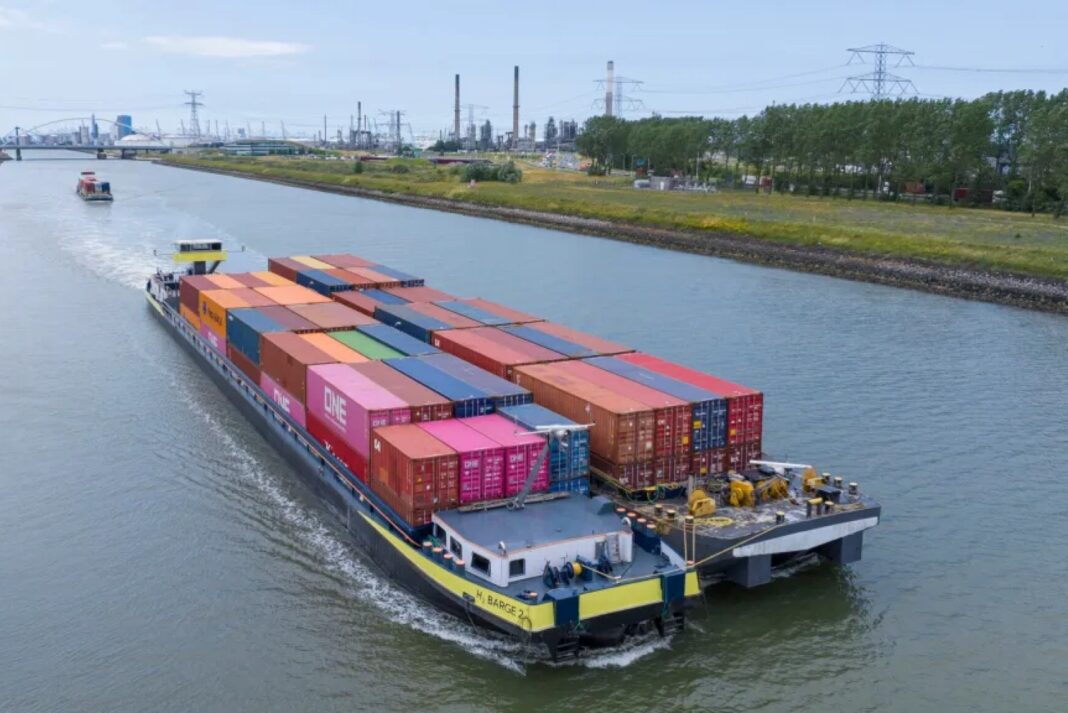BeonNAT project turns poor soils into resources through innovative intercropping
Across Europe, large areas of marginal land – characterized by poor soil, low fertility, and difficult climatic conditions – remain underutilized. These landscapes, once excluded from conventional agricultural use, are now the focus of BeonNAT, a Horizon 2020 research and innovation project aimed at producing biomass through intercropping strategies tailored to degraded or abandoned land. Running from July 2020 to June 2025 and coordinated by the Spanish research center CIEMAT, BeonNAT involves 17 partners from 9 European countries, including scientific institutions, industry players, and SMEs. With nearly €5 million in EU funding, the project operates test sites in Spain, Germany, and Romania.
BeonNAT explores how native and adapted tree and shrub species can be cultivated in combination – rather than as monocultures – to maximize soil recovery, improve biodiversity, and generate bio-based raw materials. The project’s intercropping model is designed to optimize the ecological interactions between species, enhancing productivity while minimizing inputs. Intercropping – BeonNAT’s chosen approach – is a key player in this vision. Unlike monocultures, which exhaust the soil and invite pests, intercropping brings complementary species together, creating natural synergies that enhance yields, stabilize ecosystems, and reduce the need for chemicals.

This image shows the layout of the field trials used in the BeonNAT project to compare monoculture and intercropping systems. Each test site is divided into separate plots: one for each species grown alone and one for intercropping, where different species are planted in alternating rows. The design also includes control areas with no planting to monitor natural changes. This structure allows researchers to carefully assess plant growth, soil health, and biodiversity in each scenario.
A plant for every soil
In the arid hills of Velefique in southern Spain, rosemary (Rosmarinus officinalis) and rockrose (Cistus ladanifer) were selected for their drought resilience. In contrast, Romania’s wetter soils welcomed species like black locust (Robinia pseudoacacia) and black poplar (Populus nigra), which can handle periodic waterlogging. In Brandenburg, Germany, test fields focus on sandy soils typical of northern Central Europe.
Each of the six field sites includes monoculture plots, intercropping arrangements, and uncultivated control zones. The layout allows researchers to track plant growth, biodiversity, and soil health over time. Data is collected seasonally and analyzed using both conventional and advanced tools – including the Tea Bag Index to assess soil biological activity and DNA extraction techniques to measure microbial diversity. These methods provide a comprehensive assessment of ecosystem changes.


Burying of Tea Bags with a Soil Corer
This image illustrates the tea bag burial process used in the Tea Bag Index (TBI) test to measure soil biological activity. Researchers bury standardized tea bags at a specific depth using a soil corer. After about three months, the tea bags are recovered, and the loss of mass indicates the rate of organic matter decomposition. This simple yet powerful method provides valuable insights into the health and microbial activity of the soil in the test plots.
At each test site, the experimental design includes plots cultivated with single species monocultures for baseline comparison, alongside intercropping plots where species are planted at varying row distances to explore different interaction dynamics. Additionally, uncultivated control areas are maintained to observe natural ecological changes without human intervention. This comprehensive layout enables researchers to rigorously quantify the advantages of intercropping relative to traditional cultivation methods. The project employs a thorough, multi-year monitoring program that systematically tracks several key indicators. These include plant survival and growth rates, a range of soil health parameters such as organic matter content, nutrient availability, and biological activity, as well as shifts in biodiversity across both plant and animal populations.
When the ground comes back to life
Results are promising. In the Lubia site, Spanish technicians observed that soils previously deemed too stony and dry began retaining moisture better as the mixed root systems took hold. Local farmers, initially skeptical, are now watching the project closely. The prospect of bringing income back to marginal plots – without the intensive labor and chemical inputs of traditional crops – is increasingly attractive.
In Romania, BeonNAT’s intercropping fields provided new habitats for small mammals, birds, and insects within just two years. One researcher recounted finding a family of field mice nesting among the young poplars – a clear sign that life was returning to the soil.

Panoramic photo trap installation
This image shows the installation of a panoramic photo trap, a device used to automatically capture images of wildlife in the test areas. Mounted on a wooden pole at about 1.8 meters above the ground, the camera continuously monitors animal activity, including birds, mammals, and reptiles, without disturbing their natural behavior. This tool helps BeonNAT researchers assess biodiversity and observe how different species interact with the newly planted ecosystems.
In Germany, near Kromlau, the mixed plantings of birch and broom (Cytisus scoparius) began to visibly enrich the sandy soils and stabilize loose ground, reducing erosion and improving conditions for subsequent plantings. These findings suggest that BeonNAT’s intercropping systems can effectively rehabilitate marginal lands while delivering biomass for industries producing biochar, bioplastics, essential oils, and other bio-based products.
Beyond environmental restoration
BeonNAT’s impact extends beyond environmental restoration. For example, BeonNAT’s biomass can feed industries producing essential oils, bioplastics, biochar, and other bio-based materials. These outputs directly replace fossil-derived products, supporting carbon neutrality goals.
Furthermore, by valorizing marginal lands, the project supports rural development in areas affected by depopulation and low agricultural profitability. Local technicians and farmers are actively involved in implementing and monitoring the project, contributing to capacity building and long-term adoption.
While challenges remain – such as climatic variability, species selection, and market viability – the project provides a replicable model for integrating sustainability, land recovery, and circular economy goals. With standardized protocols under development and growing interest from both policymakers and industry stakeholders, BeonNAT is positioned to scale. Its field-tested intercropping strategies may soon inform broader land management practices across Europe, turning neglected landscapes into productive, biodiverse, and climate-resilient systems.
References
- The BeonNAT Project: Innovative Value Chains from Tree and Shrub Species Grown in Marginal Lands as a Source of Biomass for Bio-Based Industries – L.S. Esteban, CEDER-CIEMAT, I. Mediavilla, CEDER-CIEMAT.
- Development of bio-based ingredients from underused trees and shrub species for industrial application – Xavier, Virginie; Heleno, Sandrina A.; Prieto Lage, Miguel A.; Amaral, Joana S.; Mediavilla Ruiz, Irene; Esteban Pascual, Luis Saul; Ferreira, Isabel C.F.R.; Barros, Lillian.
- https://beonnat.eu/poster-presentations/









